Understanding Dry Cooling, Evaporative Cooling, Adiabatic Cooling, and Hybrid Fluid Cooling Solutions
By Stephen G. Kline, P.E., M.B.A., Product Applications Manager, Baltimore Aircoil Company
HVAC, refrigeration, and industrial applications typically use one of the three primary methods of cooling – dry cooling (air cooled), evaporative cooling (water cooled), or adiabatic cooling. Hybrid cooling – a combination of dry and evaporative cooling – optimizes the use of water and electricity depending on the cooling load, climate and costs, has also gained in popularity in recent years. To choose the optimal cooling system, the engineer must consider the climate, desired operating cost, water availability, cooling load, and any other potential site-specific objectives and constraints such as maintenance.
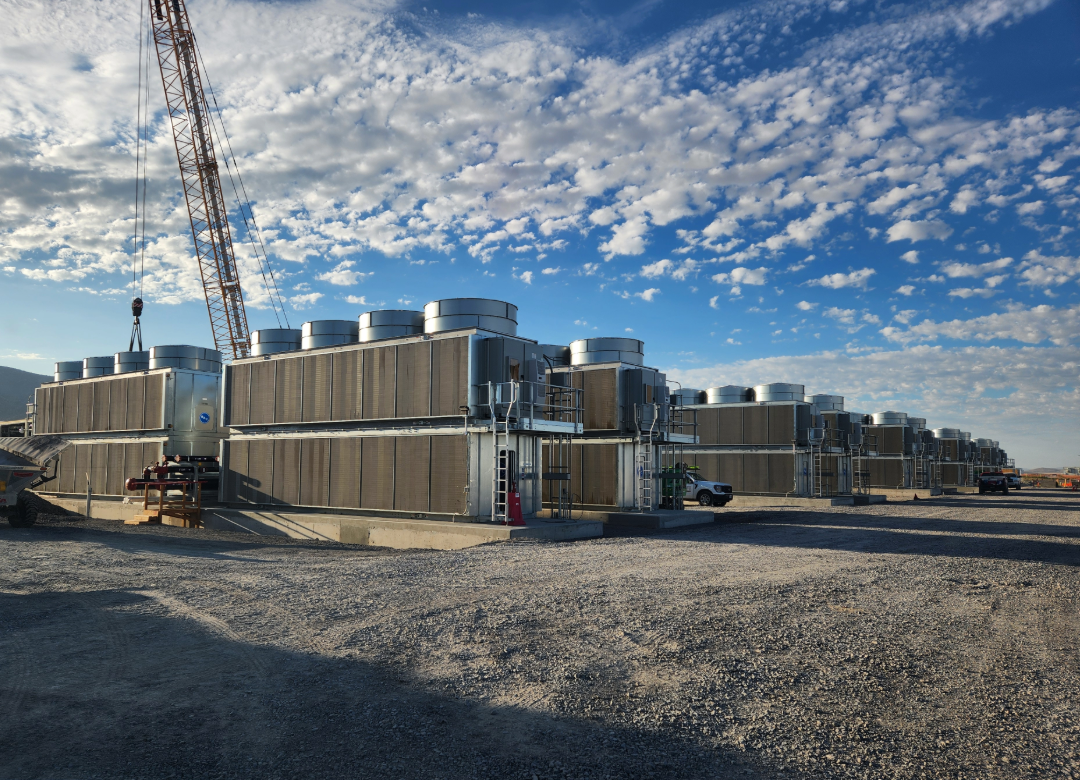
Dry Cooling (Air Cooled)
Air cooled systems use dry cooling. Air passes over a finned heat exchanger containing the process fluid. Heat is sensibly transferred from the process fluid in the heat exchanger to the airstream flowing through the unit. To efficiently cool the process fluid to the desired temperature for the system, the dry bulb temperature must be significantly lower than the fluid temperature. In hot climates and during periods of high ambient temperatures, this technology results in higher process fluid design temperatures and lower overall system efficiencies.
Air cooled units consume a great deal of energy to operate the fans, which must move a large volume of air. Significantly more heat transfer surface area than the other cooling methods is also required, typically resulting in a much larger footprint for dry coolers than systems that utilize either evaporative or adiabatic heat rejection. The higher system design operating temperature results in significantly greater energy consumption for the system.
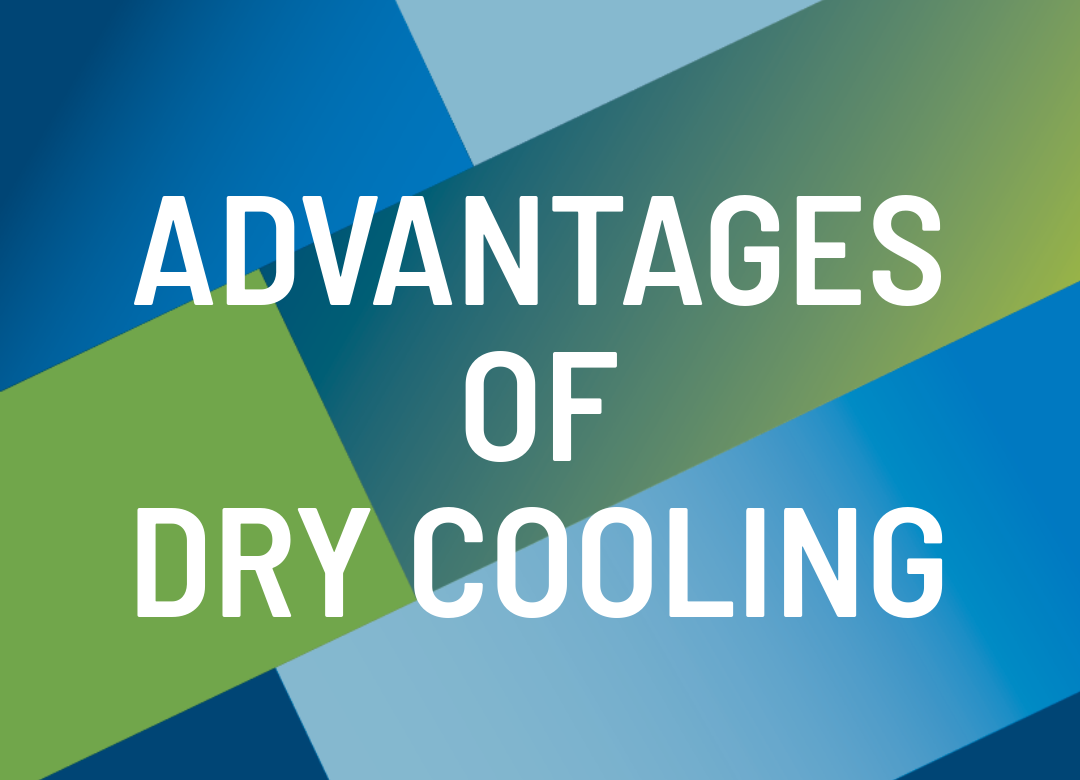
Advantages of Dry Cooling
- No Water Used: Dry coolers are ideal for projects or regions where water is extremely limited or when water quality is a concern. Additionally, dry coolers are considered when all of the electricity to a site is available with renewable power sources, such as wind or solar.

Evaporative Cooling (Water Cooled)
Water cooled systems typically use evaporative heat rejection to maximize energy efficiency and minimize footprint of an installation. Evaporative cooling efficiently transfers heat from the recirculating water and discharges warm, moist air to the atmosphere by utilizing both the sensible and latent potential of the air. Evaporative heat transfer significantly reduces the required fan power, footprint, and, most importantly, the overall system energy consumption. This energy consumption is significantly less than the total energy usage of similarly sized systems utilizing either air cooled or adiabatic solutions. In cooling towers, fluid coolers, and evaporative condensers, a distribution system passes water over a heat exchanger such as fill media, coil or other heat exchanger. Using the same physics as perspiration, the evaporative process cools the surface of the water as the H2O molecules transition from the liquid to the gas phase. Heat is then transferred to the airstream and ultimately into the atmosphere through the evaporative cooling process.
The evaporative process is dependent on the ability of the entering air to absorb the evaporated water molecules using the enthalpy driving force of the air. The drier and less humid the air, the higher this potential, as indicated by the wet bulb temperature, which is always equal to or less than the dry bulb temperature of the air. The wet bulb temperature is related to the amount of moisture in the air relative to the dry bulb temperature. An evaporative product can lower the process fluid in the heat exchanger to within a few degrees of the wet bulb temperature. Evaporative products have proven to be powerful, energy-efficient cooling solutions in all climates. Evaporative products use the power of water to save significant amounts of energy. To optimize the water used, design considerations evaluating water quality, upgrading the materials of construction of the units and implementing an effective water treatment program.
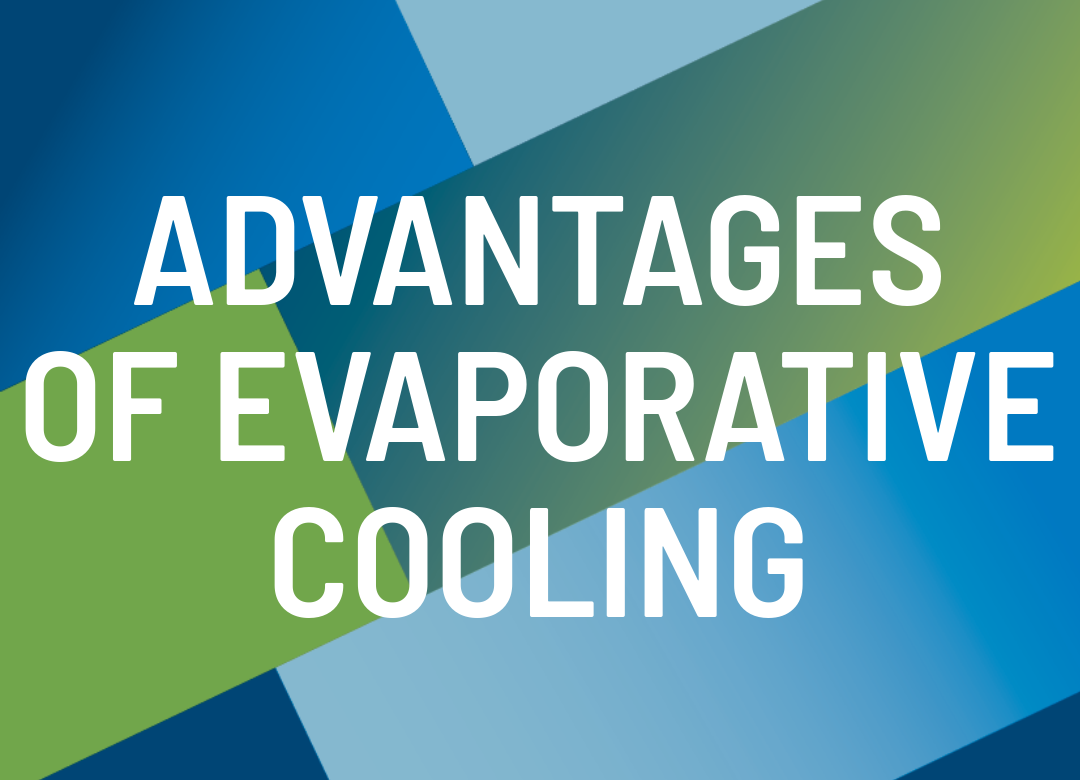
Advantages of Evaporative Cooling
- Lower process fluid temperatures can be achieved: The amount of evaporation, and hence heat transfer, depends on the wet bulb temperature instead of dry bulb temperature. Especially in the summer this wet bulb temperature is far lower than the equivalent dry bulb temperature. For example, during hot summer days with dry bulb temperatures exceeding 95°F, the wet bulb could be as low as 71.6°F, making it possible to cool the process fluid down to 77°F using evaporative cooling.
- Compact Design: This design results in 50% area savings compared to comparable air-cooled installations. This also makes them easier to install.
- Refrigerant Charge: The highly efficient design consists of a more compact heat exchanger resulting in a low refrigerant charge.
- Considerable Energy Savings: Evaporation removes more heat in comparison to conventional air-cooled methods for heat transfer, while requiring four times less airflow.
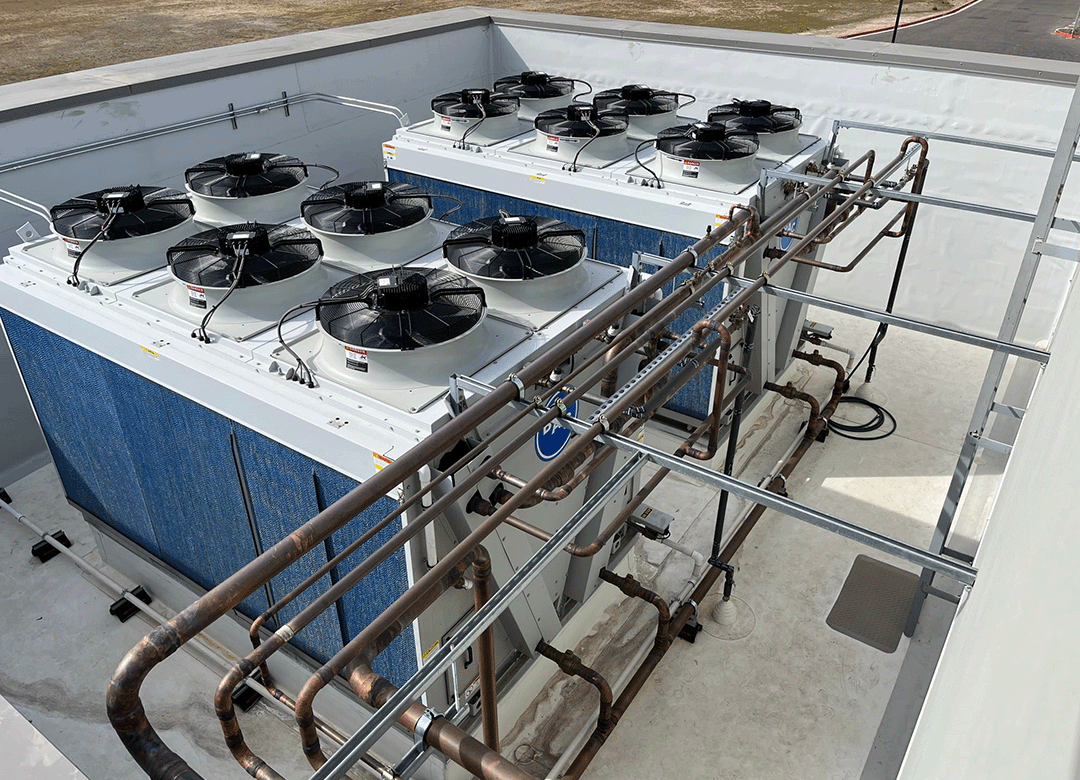
Adiabatic Cooling
Adiabatic cooling products also uses evaporation, but as a means of cooling the entering air passing through a finned heat exchanger. In a properly designed and operated system, the finned heat exchanger stays dry, protecting the surfaces from scale and corrosion. The air can be cooled by either spraying water into the airstream or by using wetted pads that provide a surface for water and air to interface. In the first case, the goal is that the water sprayed into the airstream evaporates before reaching the finned coil, avoiding scaling and corrosion on the coil which can negatively impact system efficiency and equipment lifetime. In the second case, a wetted pad is used to cool the entering airstream. The pads are specially designed to retain water on the surface of the pads to ensure that it does not carry over to the finned coil minimizing the potential for scale and corrosion. The water distribution system maximizes pad efficiency by effectively wetting the pad to minimize process fluid temperatures and prevent scale formation.
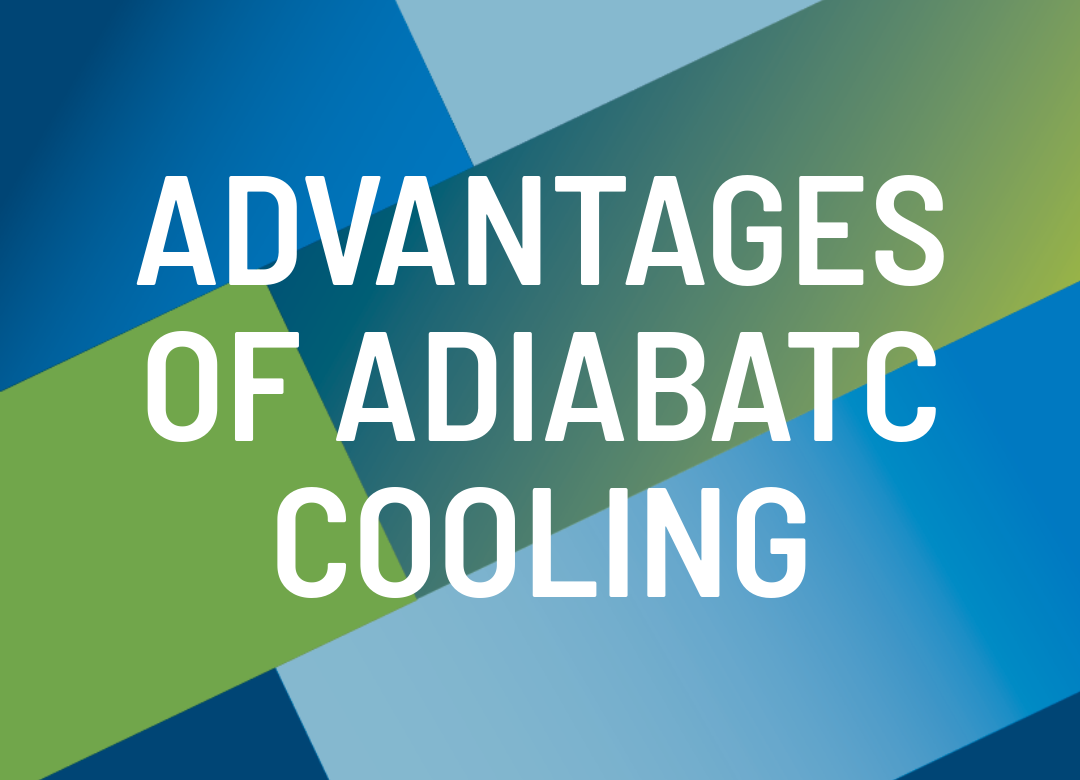
Advantages of Adiabatic Cooling
- Water Savings: The use of a small amount of water to precool the air entering the heat exchanger lowers the required airflow and fan power compared to air cooled units, while also lowering the fluid temperature back to the system. In the most efficient adiabatic systems, the air is cooled close to the wet-bulb temperature. Such substantial depression of the air temperature results in a significant increase in cooling capacity and energy efficiency compared to dry-only designs. Once the ambient temperature begins to approach freezing, or during times of reduced load, the unit can be switched to operate in a dry-only mode, thus decreasing water usage.
- Multiple Modes of Operation with Controls: Adiabatic product controls are designed to be flexible, intelligent, and customer-friendly, taking full advantage of the dual operating modes. At a customer-selected design point, such as a cooler ambient dry bulb and a lower heat load, the unit can turn off the water and switch to operation in dry mode. Additional control features include a daily maintenance mode, energy saver, or water saver mode.

Hybrid Cooling
Hybrid products use a combination of dry and evaporative cooling technology. Combining the benefits of both, hybrid products can be ideal for water-sensitive applications while still offering high energy efficiency.
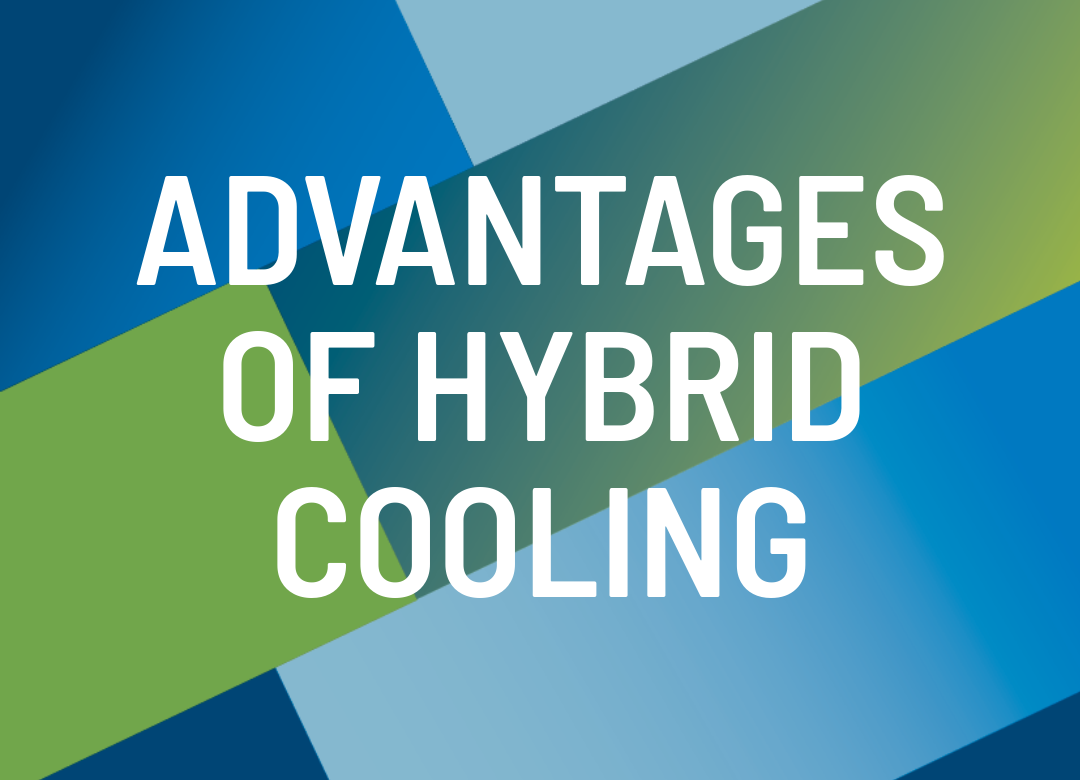
Advantages of Hybrid Cooling
- Balances Water and Energy: Hybrid cooling products have the option to operate “wet”, adding the benefits associated with either evaporative or adiabatic heat rejection, as well as operate in a dry mode. Depending on the customer’s water and energy requirements, along with ambient conditions, these products can shift the load to the proper method of heat rejection to optimize the conservation of both water and energy for a specific site.
- Lower process fluid temperatures can be achieved: Since this unit can operate in “wet” mode, this hybrid products can achieve low process fluid temperatures and lower system operating costs.
- Compact Design: Footprint savings compared to comparable dry cooler or adiabatic installations.
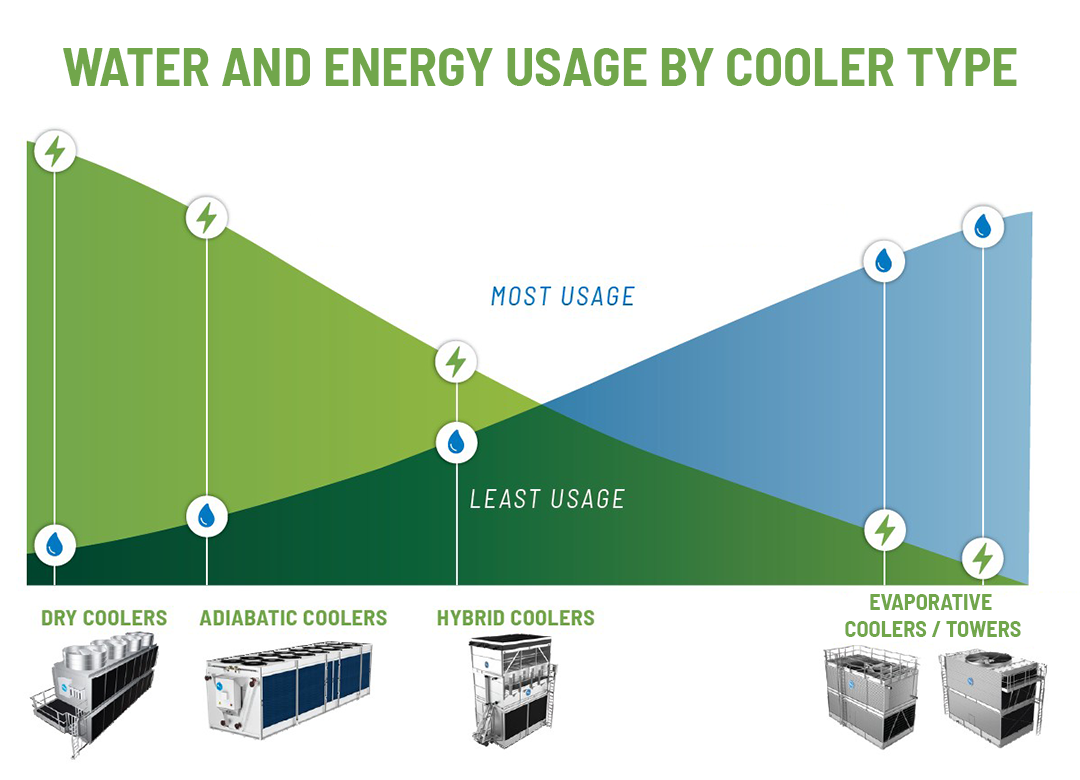
BAC, the leader in sustainable cooling solutions, creates cutting-edge heat rejection technology to meet our customers’ needs: air cooled, water cooled, adiabatic, and hybrid cooling solutions are all readily available, each offering unique advantages for your system. Contact your local BAC Sales Representative for assistance in choosing the optimal cooling solution for your next project.
